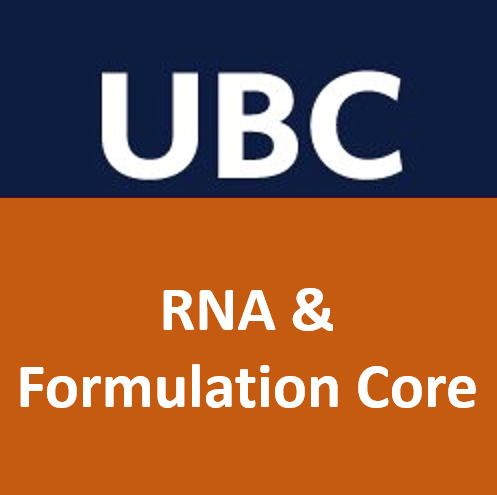Global leader LNP team
The RFC leverages the expertise brought by Prof. Pieter Cullis, best known for the development of the ionizable lipids that solved the seemingly insurmountable delivery challenge for RNA. The essential role Prof. Cullis had in developing the COVID-19 mRNA vaccines has led to nearly two dozen prestigious awards and recognitions since 2021. The RFC therefore has a unique opportunity to combine efforts with the Cullis NanoMedicines Research Group to deliver a one-stop shop for both RNA and LNP needs.

Liquid nanoparticles
Lipid nanoparticles (LNPs) are currently the most advanced and successful systems to deliver nucleic acids to in vivo. LNPs address three major challenges for RNA delivery.
- Free floating RNA in the bloodstream is highly immunogenic.
LNPs fully encapsulate RNA, thereby shielding it from immune sensors. - RNA is rapidly degraded by serum ribonucleases.
Similarly, encapsulation protects the RNA from the abundant, naturally present degradation pathways. - RNA is a large, charged molecule that cannot pass cell membranes.
Lipid nanoparticles mimic naturally occurring lipid complexes and are readily endocytosed (primarily by the liver). They contain non-toxic ionizable lipids that, during acidification that occurs during endosome maturation, become charged and disrupt the LNP and endosomal membrane. This ultimately provides safe passage for a massive, charged, foreign molecule.

Dissecting an LNP
LNPs are typically composed of five key components:
- RNA payload
- Ionizable lipid
- Helper lipid
- PEGylated lipid
- Cholesterol
They are formed through the rapid microfluidic mixing of an aqueous phase, containing the RNA, and an organic ethanol phase, consisting of the lipids and cholesterol. Dialysis and concentration steps are then completed to remove ethanol and bring the drugs to a standard, functional concentration.
